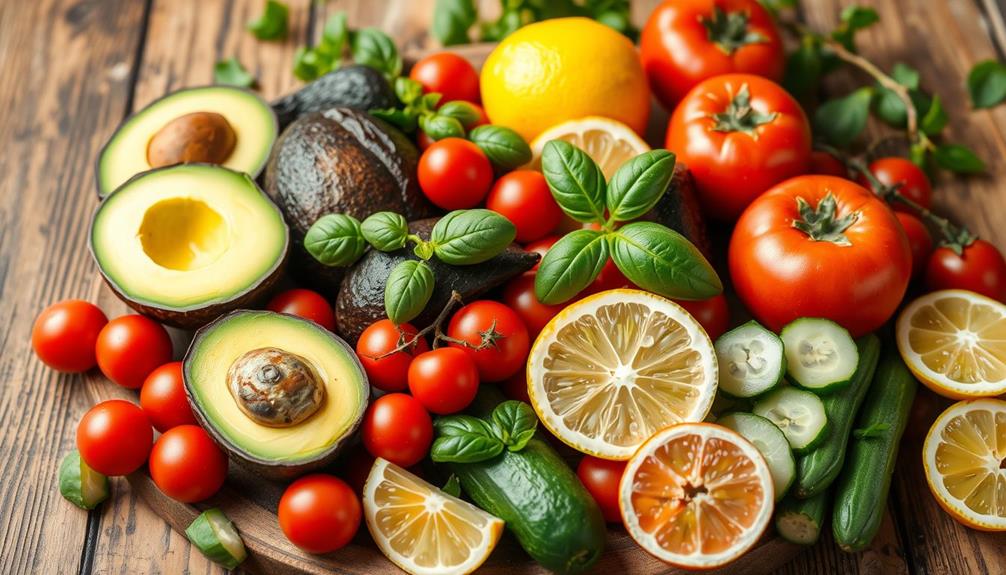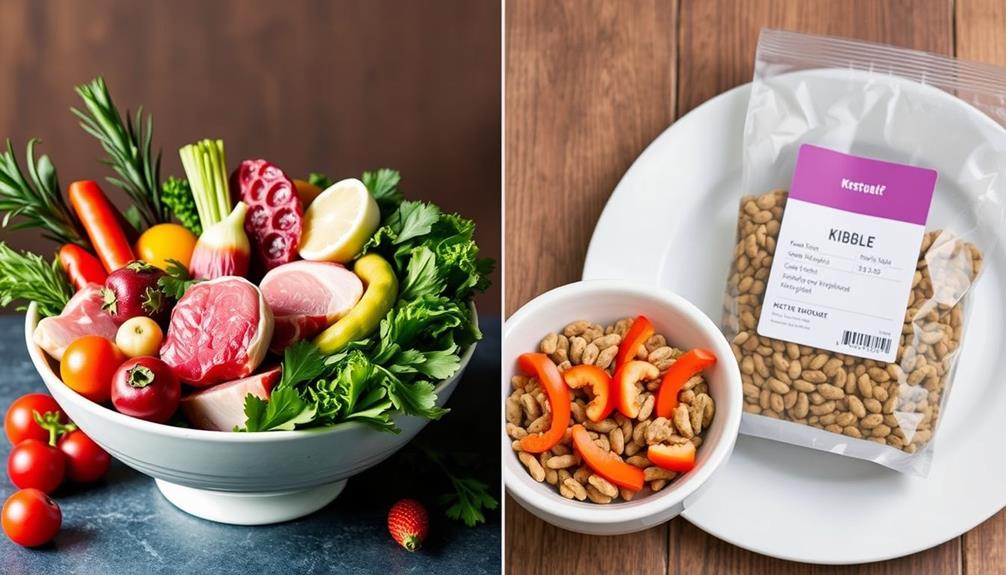You can easily whip up delicious raw food recipes with just five ingredients or less. Try making raw avocado chocolate pudding, which is creamy and decadent in under 10 minutes. Or, refresh your taste buds with tangy raw lemon bars made from soaked cashews and lemon juice. For breakfast or a snack, mix chia seeds with almond milk for a tasty pudding. You can also create flavorful dips using nuts and seeds to pair with fresh veggies. These simple recipes can keep your meals exciting and nutritious. Keep going to discover even more easy and creative raw food ideas!
Key Takeaways
- Raw avocado chocolate pudding requires just ripe avocados, cocoa powder, maple syrup, vanilla extract, and a pinch of salt for a quick treat.
- Create refreshing raw lemon bars using soaked cashews, fresh lemon juice, maple syrup, coconut oil, and a dash of salt for a zesty snack.
- Mix chia seeds with almond milk and a sweetener of choice to prepare a simple chia pudding, perfect for breakfast or dessert.
- Blend nuts and fresh herbs to craft flavorful dips and spreads, ideal for pairing with raw vegetables for a nutritious snack.
- Combine fresh fruits like bananas, berries, or mangoes with a handful of nuts for a satisfying, easy raw food meal or snack.
Benefits of Raw Food
Raw food diets offer a variety of health benefits that can enhance your overall well-being. By incorporating raw food recipes into your meals, you're choosing healthy ingredients like fruits and vegetables that are rich in vitamins, minerals, and enzymes. These foods support weight management due to their lower calorie density and higher nutrient density compared to processed options.
Additionally, the high antioxidant content found in many raw foods, such as cranberry juice consumption, further contributes to overall health by combating oxidative stress.
The high fiber content in raw fruits and vegetables plays an essential role in promoting better digestion and assisting in detoxification processes. This means you can enjoy a diet that not only nourishes you but also helps your body eliminate toxins effectively.
Studies have shown that a raw vegan diet can lead to increased energy levels and alleviate symptoms linked to conditions like diabetes and nerve damage.
Additionally, the way your body metabolizes fruits in a raw diet is beneficial. Their fiber content leads to slower glucose absorption, which helps reduce spikes in blood sugar levels.
Incorporating elements like nutritional yeast can further enhance your meals, providing essential nutrients while keeping you satisfied. Embracing raw foods can truly help you enhance overall health and wellness.
Simple Raw Recipe Ideas
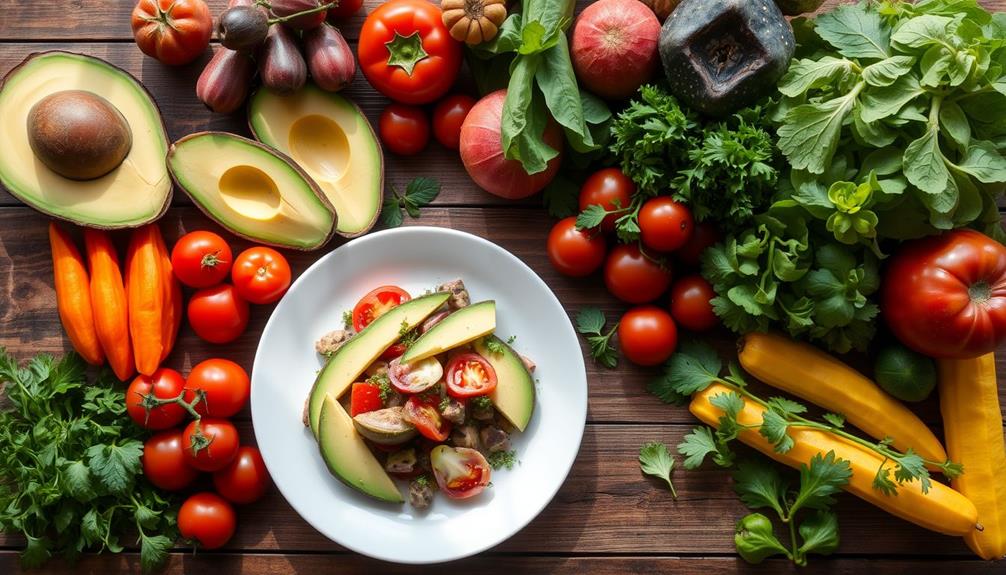
Incorporating raw foods into your diet doesn't have to be complicated or time-consuming. You can whip up quick, healthy meal options using five ingredients or less. Many raw recipes focus on fresh fruits, vegetables, nuts, and seeds, which aren't only nutritious but also incredibly versatile.
Additionally, considering the benefits of proper hydration is essential, especially when preparing raw meals, as it supports overall health and digestion importance of hydration.
For a delicious and satisfying dessert, try making raw avocado chocolate pudding. Just blend ripe avocados, cocoa powder, maple syrup, and a splash of almond milk in your food processor. In under 10 minutes, you'll have a creamy treat that's raw and vegan-friendly.
Alternatively, raw lemon bars can be a revitalizing snack; simply combine soaked cashews, lemon juice, coconut oil, and a sweetener in your food processor for a zesty delight.
Don't overlook the potential of chia seeds! Mix them with almond milk and your favorite sweetener to create a quick chia pudding. You can also make flavorful dips and spreads with nuts and seeds, perfect for pairing with raw veggies.
With these simple raw recipe ideas, you'll find that healthy meal preparation can fit seamlessly into your busy lifestyle. Enjoy the ease and taste of raw and vegan creations!
Overcoming Raw Food Challenges
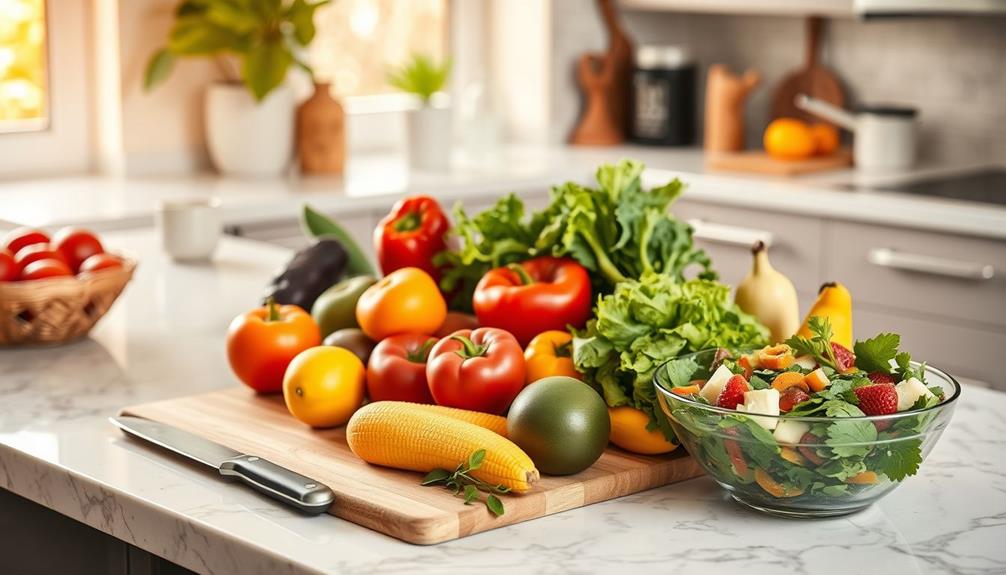
Shifting to a raw food diet can be rewarding, but it also comes with its share of challenges. You might experience cravings as your body adjusts to the absence of processed food. Gradually incorporating raw meals can help manage these cravings. It's essential to plan your meals carefully to avoid nutrient deficiencies, especially magnesium and calcium.
Here's a simple guide to tackle common challenges:
| Challenge | Solution | Tips |
|---|---|---|
| Cravings | Gradual shift | Incorporate more raw snacks |
| Nutrient Deficiencies | Diverse ingredients | Include nuts, seeds, and greens |
| Weight Fluctuations | Balanced meals | Focus on fiber-rich foods |
| Social Situations | Bring your own snacks | Suggest raw-friendly restaurants |
| Meal Monotony | Plan and prep | Use different herbs and spices |
For busy people, these simple to make vegan recipes can save time and guarantee you're enjoying fresh ingredients. By embracing a variety of foods and getting creative with your prep work, you can overcome the challenges and thrive on your raw food journey!
Community and Support Resources
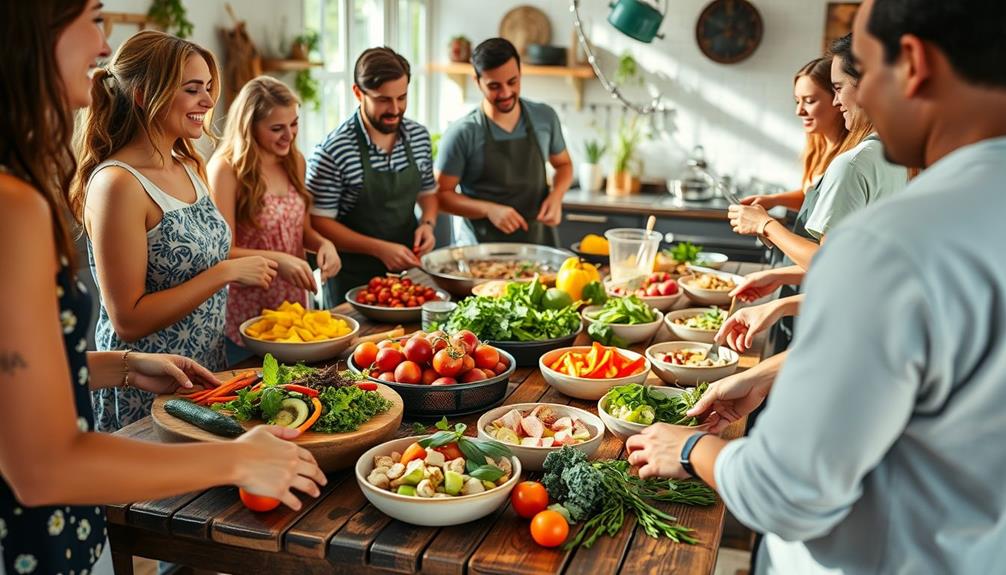
As you commence your raw food journey, tapping into community and support resources can make a significant difference in your experience. Engaging with online forums and social media platforms focused on raw food allows you to connect with others who share your interests.
You can easily find raw recipes that are easy to make, share experiences, and gain valuable support from fellow enthusiasts. Additionally, exploring diverse cultural practices, such as Native American dance traditions, can provide a deeper appreciation for the community aspect of food and health.
The Rawtarian, for example, offers courses and encourages members to explore comments from others, providing a rich source of inspiration and recipe ideas. Documentaries and literature about raw food diets can further enhance your understanding and motivation, serving as excellent educational resources.
Don't underestimate the power of connecting with health professionals, such as nutritionists and health coaches. They can offer personalized guidance and insights into the benefits of a raw food diet, ensuring your approach is balanced and health-focused.
Essential Ingredients for Raw Cooking
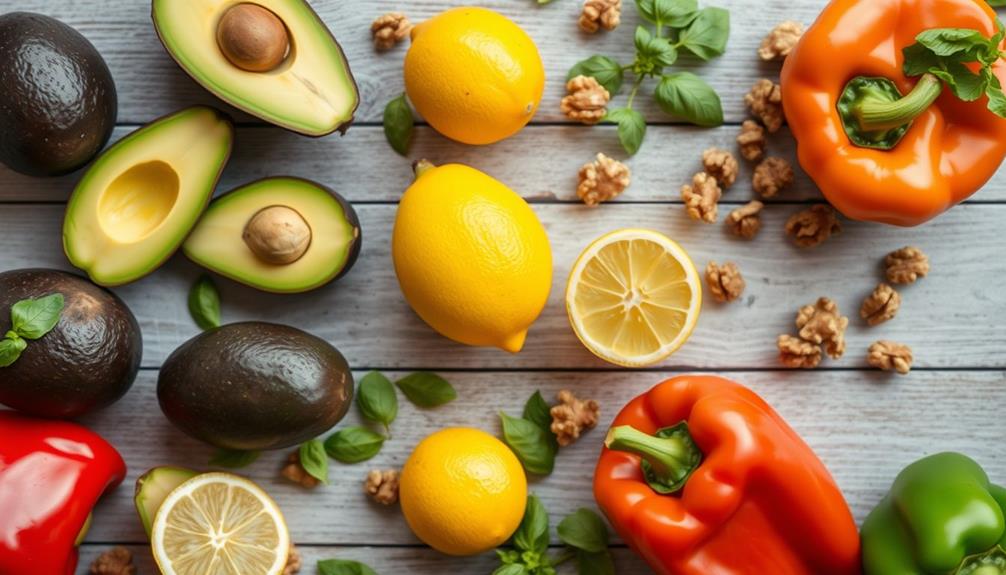
Connecting with like-minded individuals on your raw food journey not only enhances your experience but also opens up a world of culinary possibilities.
To create delicious and nutritious raw recipes with 5 ingredients or less, it's important to stock up on key ingredients. Incorporating essential oils for added flavor can also elevate your dishes while providing additional health benefits.
Here's a quick list of must-have items:
- Fresh Fruits: They add natural sweetness, hydration, and a burst of vitamins.
- Nuts: Rich in healthy fats and protein, they provide essential nutrients and make your meals satisfying.
- Seeds: Like nuts, seeds offer healthy fats and can easily be incorporated into various recipes for added texture and nutrition.
- Herbs: Fresh herbs like basil or cilantro elevate flavors without extra calories, making your raw dishes pop.
Using high-quality, organic ingredients will maximize the nutritional value and taste of your raw recipes.
When you choose fresh fruits, nuts, seeds, and herbs, you're not just nourishing your body; you're also embracing a vibrant, flavorful lifestyle.
Frequently Asked Questions
How Can I Store Raw Food to Keep It Fresh Longer?
To keep your raw food fresh longer, store it in airtight containers, use moisture-absorbing packets, and place it in the fridge. Check for spoilage regularly, and avoid washing produce until you're ready to use it.
Are There Any Specific Tools Needed for Raw Food Preparation?
When preparing raw food, you'll need a few essential tools. A sharp knife, cutting board, and food processor are must-haves. A spiralizer can also enhance your dishes, making them visually appealing and fun to eat.
Can I Meal Prep Raw Food in Advance?
Yes, you can definitely meal prep raw food in advance. Just wash, chop, and store your ingredients in airtight containers. It'll save you time during the week and keep your meals fresh and nutritious!
What Are Some Common Mistakes When Starting a Raw Food Diet?
When you start a raw food diet, you might rush into overly complicated meals. For instance, Sarah tried intricate recipes but felt overwhelmed. Instead, focus on simple, fresh ingredients to ease your shift and enjoy the process.
How Do I Transition to a Raw Food Diet Gradually?
To shift to a raw food diet gradually, start by incorporating more raw fruits and veggies into your meals. Replace processed snacks with fresh options, and slowly reduce cooked foods to ease your body into the change.
Conclusion
So, there you have it! Embracing raw food doesn't mean you have to turn into a kale-crazed rabbit. With just five ingredients or less, you can whip up delicious meals that'll make your taste buds dance—without the need for a PhD in culinary arts. Remember, you're not just eating; you're on a mission to outsmart your oven and show off your raw culinary prowess. Immerse yourself, and who knows, you might just become the next raw food guru—no cooking skills required!

